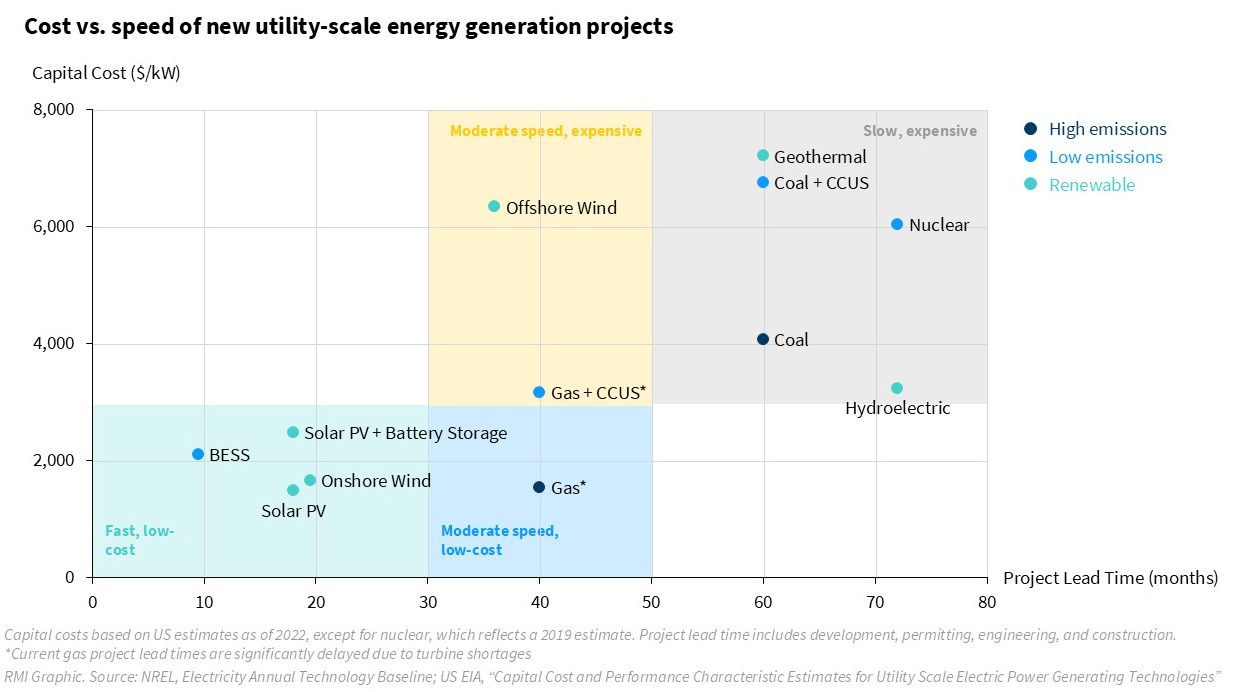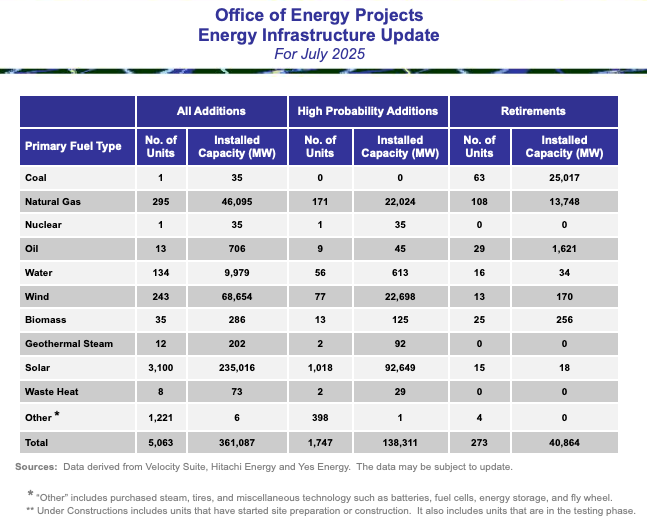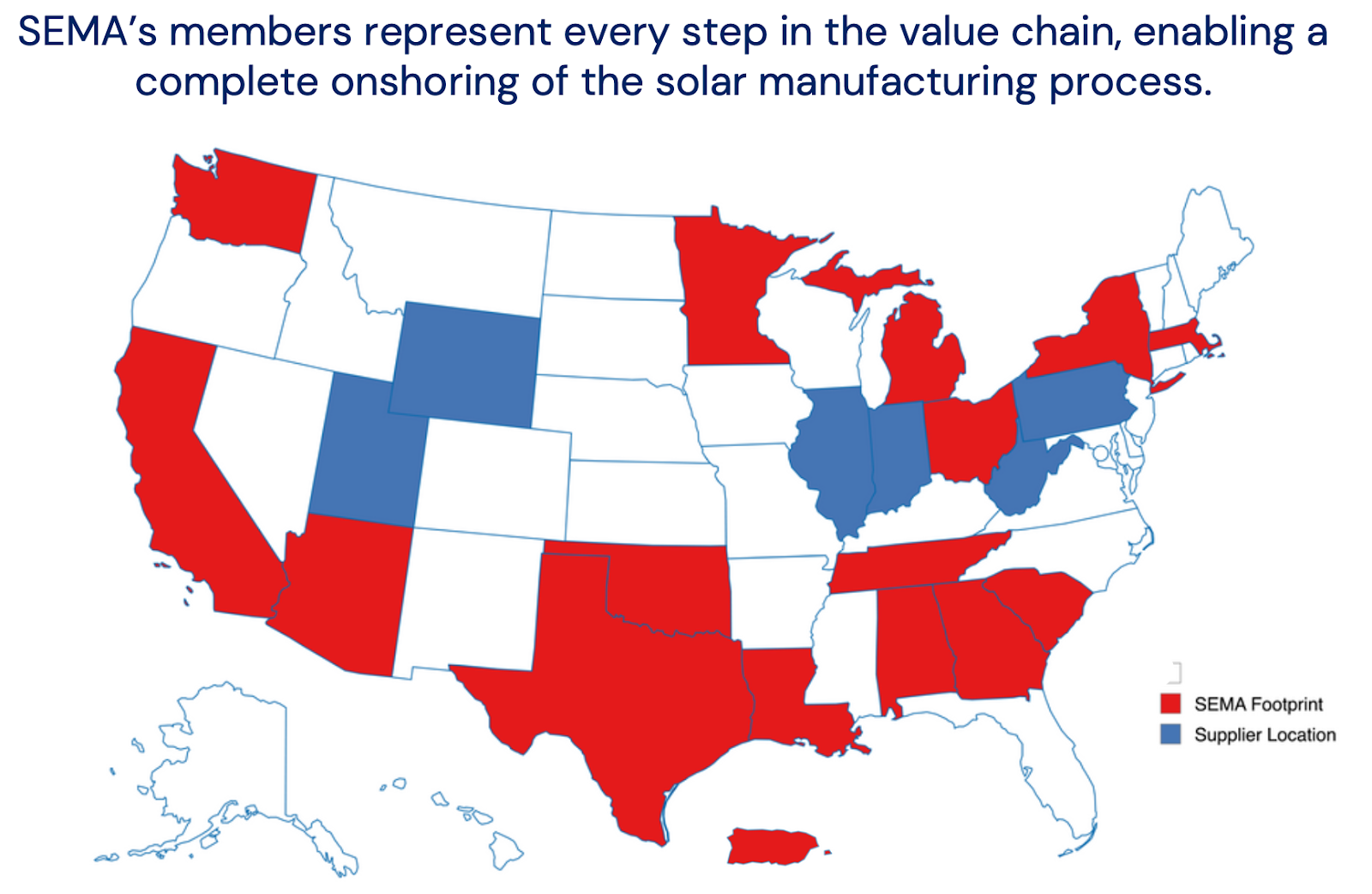.png)
Artificial Intelligence (AI) is reshaping every sector of the American economy and will have massive implications for American competitiveness. Leading experts have concluded that electricity supply is the most acutely binding constraint in expanding AI capacity and our current electricity production is woefully inadequate. The U.S. is seeing an electricity demand surge and needs every tool available to win in the AI race. American made solar and storage are the critical bridge technologies to get electrons on the grid for AI while other resources remain constrained.
The Department of Energy projects that electricity demand from U.S. data centers could triple by 2028, reaching up to 12% of our total U.S. electricity consumption. That growth is already showing up in utility forecasts, interconnection queues, power procurement contracts, and energy prices.
President Trump’s executive orders recognize this challenge and underscore a bold commitment to securing America’s leadership in AI and energy dominance. Delivering on the President’s mandate demands an all-of-the above energy strategy that deploys gigawatts of electrons quickly and builds on U.S. manufacturing supply chains. This is where American-made solar comes in.
In the past few years, the U.S. has reshored a domestic solar supply chain uniquely positioned to meet this moment. We can manufacture over 50 GW – roughly 50 nuclear power plants worth – of American made solar modules each year and the upstream segments of the supply chain are quickly scaling. American-made solar and storage is being used to power the next generation of AI, all while supporting over 40,000 American solar manufacturing workers.
The timelines for AI energy buildouts are measured in quarters, not years. Long permitting and interconnection delays and supply chain bottlenecks are forecasted to delay the use of other generation sources. Utility-scale solar and storage projects can quickly come online in one to two years. AI data center business models depend on speed, and that energy deployment advantage is decisive. Utilities, energy developers, and industry analysts across the board have pointed to utility-scale solar and storage, combined with natural gas, as the near-term solution for meeting AI’s energy needs.

The deployment of solar from major utilities speaks for itself. Dominion Energy, the utility that serves Northern Virginia’s huge data center market, in its 2024 Integrated Resource Plan (IRP) projects 6 GW of gas, alongside 12 GW of solar, 6 GW of offshore wind, and 4.5 GW of storage by 2039. Other major integrated utilities like Georgia Power and Duke Energy are taking a similar portfolio approach, with solar in the lead. The Electricity Reliability Council of Texas (ERCOT) is deploying energy to the grid at a significantly higher rate than other markets, led by American made solar deployment. In the past two years, ERCOT decreased prices and increased reliability as it deployed massive amounts of American-made solar. As of January 2025, 28 GW of gas, 38 GW of wind, 153 GW of solar, and 165 GW of storage are active in ERCOT’s interconnection queue.
In its September 30, 2025 forecast (below), the Federal Energy Regulatory Commission (FERC) forecasts 92.6 GW of “high probability additions” solar will come online through July 2028, over four times that of any other resource:

All of the U.S. AI giants, including Microsoft, Meta, Google, Amazon, and OpenAI are building out hyperscale facilities with solar. Two examples of U.S. solar manufacturing providing this energy for AI are instructive:
An estimated 6GW of First Solar technology is expected to power US data centers by the end of 2025, which will rise to 10GW in 2027. One of the clearest examples of what’s possible with American-made solar is the Orion Solar Belt in Buckholts, Texas. At around 900 MW, Orion is one of the largest solar projects in the country, and it’s designed to power Google’s growing data center operations in Texas. The project used First Solar’s U.S.-manufactured thin-film modules produced in Ohio, domestic steel, and American-made tracking systems. It is among the first large-scale energy projects to source all major components from within the U.S., demonstrating that America can deliver the scale, speed, and reliability that next-generation infrastructure requires.
And Orion is not an isolated case. First Solar’s customers are increasingly pivotal in ensuring that the surge in U.S. data centers, driven by AI and cloud computing, can be matched by equally reliable U.S. energy supply. These are exactly the kind of projects that show how energy dominance and AI dominance go hand-in-hand. Moreover, these projects support First Solar workers in Ohio, Alabama and Louisiana who make an average salary of $80,000 a year.
In 2020, Qcells celebrated the commissioning of the 102.5 MW Bancroft Station Solar Farm in Georgia, developed to support Facebook’s Newton County data center. The project used more than 350,000 modules, manufactured at Qcells’ facility in Georgia, one of the largest solar manufacturing plants in the Western Hemisphere. In addition, Qcells is soon opening ingot, wafer, and cell lines in Georgia. For Facebook, and its parent company Meta, this partnership has always been about delivery certainty. With major data campuses coming online across the South and Midwest, Meta needed a supplier capable of producing large volumes of product in the U.S. States, on a predictable timeline, without the logistical challenges of overseas sourcing.
First Solar, Qcells, and other Solar Energy Manufacturers for America (SEMA) Coalition members are not just building solar components. They are building the bridge energy needed to support the AI energy demand and American energy dominance. This all supports good-paying American manufacturing careers, not just short-term construction jobs, from Louisiana to Ohio and Michigan to Georgia.
The future of American AI dominance depends on whether the country can build and deliver enough energy infrastructure to support it. That means embracing every tool that we have —and works fast. U.S.-made solar is one of the few tools that can be built fast enough and deployed widely enough to keep pace with this growth. This moment calls for clarity and coordination. If the U.S. wants to lead in AI, it must also lead in energy manufacturing, and that means not picking winners or losers. The tools are here, more factories are opening, and solar manufacturers are hiring. The question is whether America will seize the opportunity.
